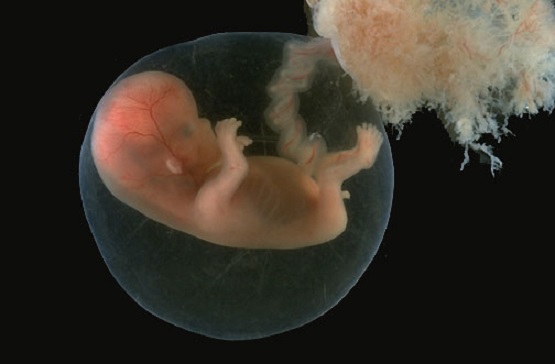As we saw in the first American election since the Supreme Court overturned Roe v. Wade, pro-abortion media and activists are willing to go to extreme lengths—even as far as tricking and misleading citizens. In European and American media outlets alike, pro-abortion advocates have gone from ignoring science to the outright denial of it. Tragically, in several states, this strategy paid off, as California, Michigan, and other states adopted radically pro-abortion measures that relied on misleading publicity campaigns.
The Guardian ran a story on Oct. 18 that was so insidiously misleading that many people undoubtedly accepted its false claims. The story claims to demonstrate “What pregnancy really looks like before 10 weeks” and shows a series of petri dishes containing what looks like white fuzz. This fuzz, the article explains, is the amniotic sac—and up until this point, the description is correct. But then things go wrong.
Underneath the picture of the seven-week amniotic sac, the article says, “Above is pregnancy tissue at seven weeks. There is still no visible embryo.” There’s just one problem: an embryo at seven weeks is very much visible. Sources as diverse as WhatToExpect.com (reviewed by medical experts), Mayo Clinic, and the British National Health Service (among countless others) offer data on fetal development; they all agree that, at seven weeks, a baby is between .3 and .5 inches long—about the size of a pomegranate seed. That’s small, to be sure, but it’s certainly visible to the naked eye. In fact, many expectant parents get their first look at their baby around week 8, when an ultrasound reveals an actual-size tiny person with a clear, strong heartbeat.
In The Guardian’s photo, however, there appears to be nothing but white fuzz.
SUPPORT LIFENEWS! If you want to help fight abortion, please donate to LifeNews.com!
From this point, the article’s misleading claims become only more egregious. The article relies on the words of Dr. Joan Fleischman, who describes herself as a family doctor. Dr. Fleischman insists that, through week nine, “there is no visible embryo.” Beneath a photo claiming to be “everything that would be removed during an abortion” at nine weeks, the article asserts that, at this point, the “embryo… is not easily discernible to the naked eye.” But at nine weeks, the baby is nearly three-quarters of an inch long—in other words, nearly the size of a paper clip, a green grape, or an AirPod Pro earbud. Those things are all “easily discernible to the naked eye,” so why not an embryo? Nine-week ultrasounds show a tiny person with a discernable head, body, and buds of arms and legs.
The unavoidable conclusion here is that The Guardian simply decided that it didn’t want its readers seeing a nine-week-old embryo—possibly because they know the statistic that around 80% of abortion-minded women who see their baby in an ultrasound choose life. We cannot say with certainty why The Guardian’s pictures show only amniotic tissue and no embryo. We cannot know if the embryos were deliberately removed or strategically covered up. But we do know that the photos are misleading. The writers misuse these photos to imply that early pregnancy is merely a woman’s body preparing for a baby by making cottony tissue, when, in reality, early pregnancy is a vibrant time of actual human development. They make early pregnancy seem like making an empty bed, when really it is more like tucking a child in for a good night’s sleep.
Many women who have experienced miscarriages before their 10th week of pregnancy responded to The Guardian’s story with anger and frustration. Some shared heart-breaking photographs (caution, graphic content) of their own miscarried babies from weeks eight, nine, or 10—photographs that show delicate faces, eyes, tiny noses, and distinct arms and legs (and fingers!) on bodies that are very easily discernible to the naked eye.
Words and pictures matter. In the election on Nov. 8, citizens in five states (Michigan, Vermont, California, Montana, and Kentucky) voted against protecting life—a reality that seems unthinkable, until we remember how pro-abortion advocates manipulate information and distort the truth of abortion. When leading newspapers betray their role as media by publishing misleading information on a topic of such importance, they trick people into supporting lies.
Prenatal science is, quite simply, pro-life. Technology has given us such a clear look into early pregnancy, and as we learn more and more about the first weeks of a child’s life, it becomes obvious that life begins at conception. Every pregnancy involves two people, a mother and a child, from the very beginning. But pro-abortion advocates cannot accept that, so they are choosing to trick the public with misleading photos, deceptive campaign slogans, and false claims. They are choosing to obscure the truth, because they cannot face it.
This is a critical time for pro-life people to tell the truth about the miracle unfolding within the womb. While pro-abortion advocates are resorting to trickery and manipulation, pro-life Americans know that the truth will set us free and empower us to truly care for the vulnerable in our midst.
LifeNews Note: Denise Harle serves as senior counsel with Alliance Defending Freedom, where she is the director of the Center for Life. This column originally appeared at CNS News.








